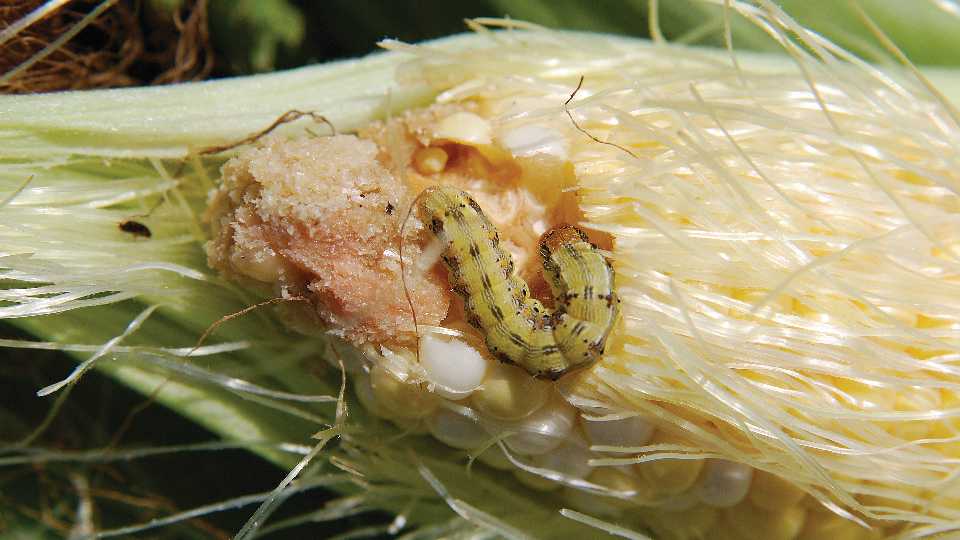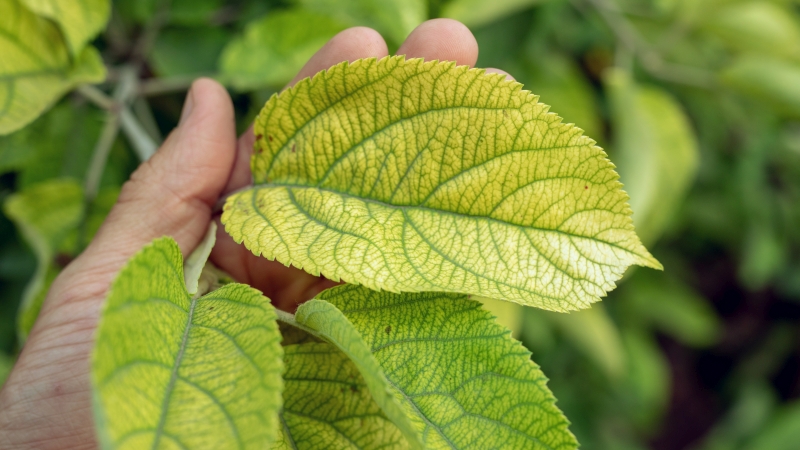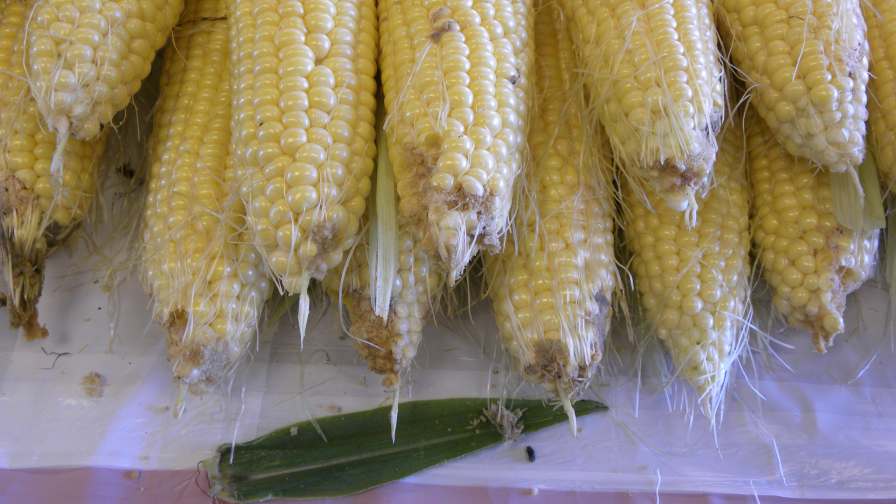Field Scouting Guide: Corn Earworm

Corn earworm caterpillar have a sandpaper-like roughness, where other caterpillars do not. Photo by Gregg Nuessly
This edition of “Field Scouting Guide” focuses on corn earworm.
Ricardo T. Bessin, University of Kentucky offers tips on how to spot and treat Heliocoverpa zea (corn earworm).
BASICS
- Scientific name: Heliocoverpa zea
- Common name: Corn earworm, soybean podworm, tomato fruitworm, cotton bollworm, sorghum headworm
- Geographical Range: It is widely distributed throughout the U.S. but not thought to overwinter north of 40 degrees north latitude. In Northern areas, it re-invades each spring and summer.
- Crops affected: It has a very wide host range of cultivated and wild hosts, notably damaging corn, cotton, hemp, and tomato.
IDENTIFICATION
There are several other caterpillar pests that commonly are confused with corn earworm. These include:
- Tobacco budworm
- Beet armyworm
- Yellowstriped armyworm
- Fall armyworm
Corn earworm is highly variable in color. The rough surface of the body distinguishes it from many of the other caterpillars, as it feels like fine sandpaper.
CROP IMPACT
Corn earworm causes serious problems for various crops:
- Hemp. For hemp producers, it attacks the bud of the plant.
- Sweet corn. With sweet corn, corn earworm is our key pest here in Kentucky, and we go to considerable effort to prevent damage to the ears. It is a more serious threat to later plantings, particularly those after the end of May. Early plantings can often avoid losses to corn earworm.
- Tomato. With tomato, it is a sporadic pest in the late fall as field corn begins to dry down. As soybean production has moved to narrow rows, this pest is less of a problem.
ECONOMIC IMPACT
Generally, corn earworm is a pest of crops when they enter reproductive stages and begin to head or fruit.
The economic impact in sweet corn is in the form of several insecticide applications, increased cost of Bt-traited seed (for those using it), and the potential rejection of corn with damage to ears.
Often, insecticide applications are made at three- to five-day intervals during silking.
The impact to hemp was significant last year as our growers had no insecticides available for that new crop. It attacks the bud of the hemp plant, which is the portion of the plant harvested for CBD extraction.
RECOMMENDED TREATMENT
Where resistance to some products has become a problem, the premix ‘Besiege’ (Syngenta) — a mixture of chlorantraniliprole (IRAC 28) and lambda-cyhalothrin (IRAC 3) — is commonly used commercially for sweet corn.
In parts of the Midwest, reduced sensitivity to some pyrethroids has been observed. There is also use of Bt sweet corn. Generally, the Bt sweet corn technologies do not stand alone, they are used in combination with corn earworm insecticides. The variety ‘Attribute II’ (Syngenta) is the most effective of available technologies.
ORGANIC CONTROLS
Name: Gemstar (Certis USA); Heligen (AbGiTech)
Active ingredient: Nuclear polyhedrosis virus of Heliocoverpa zea
Mode of action: This is a selective virus that must be ingested by the caterpillar. The insect dies as the virus replicates throughout its body.
IPM RECOMMENDATIONS
Regular scouting and monitoring of susceptible crops along with trapping to monitor adult activity levels is recommended. These levels can be used to determine the frequency of insecticide applications during the silking period for sweet corn.











